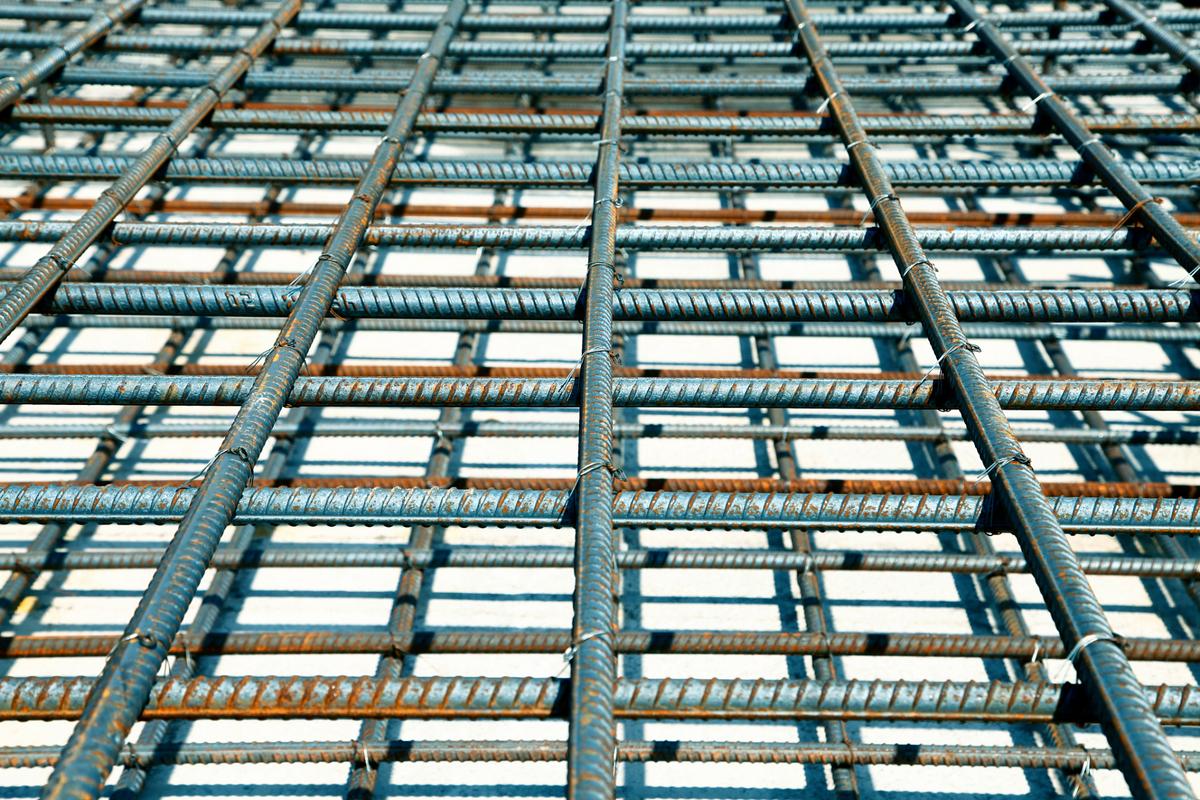5 Key Differences in Steel Mesh vs Rebar for Concrete Reinforcement
Concrete reinforcement is crucial to ensuring the longevity, stability, and overall performance of any concrete project. Among the most widely debated choices for reinforcement are steel mesh vs rebar. While both methods add much-needed tensile strength to concrete, key differences in composition, strength, installation, and cost can heavily influence which option is right for your specific needs. In this article, we’ll explore the five major differences between steel mesh and rebar to help you make an informed decision for your next construction project.

Understanding Steel Mesh and Rebar
A. What Is Steel Mesh?
Steel mesh, often referred to as wire mesh or welded wire fabric, is made by welding thin steel wires together in a grid pattern. These grids are typically available in various spacings and wire thicknesses, allowing you to choose the right configuration for the demands of your project. Steel mesh is generally sold in sheets or rolls and is favored for its ability to distribute loads evenly and minimize the risk of cracks in poured concrete.
B. What Is Rebar?
Rebar (short for reinforcing bar) is a steel bar with ribbed or deformed surfaces designed to enhance bonding with concrete. Rebar is placed strategically within concrete forms, offering increased tensile strength and load-bearing capacity. Common sizes range from #3 bars (3/8-inch diameter) to #11 bars (1-3/8-inch diameter), though larger sizes are also available for very high-load applications. Rebar is especially popular in foundations, retaining walls, and high-rise construction projects.
C. Key Roles in Construction
Both steel mesh and rebar serve the same primary function: to reinforce concrete and counteract its natural weakness in tension. Concrete is extremely strong in compression but tends to crack or break when subjected to tensile forces. By embedding steel reinforcement, you can significantly improve the structural integrity of concrete, reducing the likelihood of cracks and other failures over the structure’s lifespan.
5 Key Differences between Steel Mesh vs Rebar
A. Material Composition and Structure
- Steel Mesh: Consists of multiple thin steel wires intersecting to form a grid. The wires are welded together, ensuring a consistent spacing and making the mesh easy to handle in sheets or rolls.
- Rebar: Made of solid steel bars with ribbed surfaces. These bars offer more thickness and density, providing focused reinforcement in critical load-bearing areas.
While both are steel, the fundamental difference lies in how they’re formed and used within concrete. If you need a more uniform distribution of reinforcement in slabs or smaller pours, mesh might be ideal. On the other hand, if your project involves heavy loads, rebar’s thicker steel bars may be necessary.
B. Load Capacity and Strength
- Steel Mesh: Due to its grid pattern, steel mesh distributes loads over a broader area. This is especially useful in sidewalks, driveways, and other flat pours where stresses are distributed horizontally.
- Rebar: Rebar’s main advantage is its concentrated tensile strength. For multi-level buildings, large retaining walls, or heavy-duty industrial floors, rebar provides the robust support required to handle significant weight and tension.
A study by the American Concrete Institute (ACI) indicates that properly placed reinforcement can extend a concrete structure’s service life by over 20%. Understanding the expected load on your concrete project is essential in choosing the right reinforcement strategy.
C. Installation and Labor Intensity
- Steel Mesh: Typically easier to install in sheet or roll form, covering wide areas quickly. Workers can lay down the mesh, overlap sections, and tie them together at intersections.
- Rebar: Rebar installation involves cutting and bending bars, tying them together with wire, and ensuring the proper spacing and coverage in the forms. This can be more labor-intensive, but it allows for a customized layout to match the exact engineering requirements.
For large, simple pours (like residential driveways or patios), steel mesh can save time and labor costs. However, for complex projects or areas with complicated shapes, rebar’s flexibility in positioning may be preferable.
D. Applications in Various Projects
- Steel Mesh: Commonly used in residential concrete slabs, driveways, sidewalks, and small commercial floors. The wide coverage and easier handling make it ideal for lesser-load areas.
- Rebar: Dominates in large-scale construction such as building foundations, bridge decks, highways, and high-rise structures. For any project that requires significant tensile strength, rebar is often the default choice.
Engineers may also combine steel mesh and rebar in the same project—using mesh for broad coverage and adding rebar where loads are highest, such as support columns or beams.
E. Cost Factors and Long-Term Value
- Steel Mesh: Generally less expensive per square foot, partially because of lower labor and quicker installation times. Replacement or repairs can be simpler, as the mesh is typically used for thinner slabs in residential or low-load areas.
- Rebar: Often has a higher upfront cost due to both material and labor expenses. However, in scenarios where heavy loads or high stress is expected, the longevity and structural security provided by rebar can lead to better value over the lifetime of the structure.
Balancing the initial investment against potential repair or maintenance costs is key. If the project demands high strength and durability, rebar’s added expense can pay off in the long run.
Safety and Quality Considerations
When working with concrete reinforcement, safety is paramount. Proper handling techniques—such as wearing protective gloves and safety goggles—are crucial due to sharp edges and heavy materials. From a structural standpoint, ensuring the correct cover (distance between the reinforcement and the concrete surface) helps prevent corrosion and maintains overall quality. According to the Portland Cement Association, inadequate cover is one of the top reasons reinforcement deteriorates over time, so make sure all steel is correctly embedded to prolong the structure’s lifespan.
Pros and Cons of Steel Mesh vs Rebar
A. Steel Mesh Pros and Cons
Pros
- Easier to install and handle, especially in flat, wide areas
- Lower cost per square foot than rebar
- Distributes loads evenly across a broad area
- Ideal for moderate load requirements (driveways, sidewalks, small slabs)
Cons
- Limited tensile strength compared to rebar
- Less suitable for heavy-duty or large-scale projects
- Might require extra overlap for proper coverage, adding to material usage
B. Rebar Pros and Cons
Pros
- Offers high tensile strength for larger, load-bearing structures
- Flexible design allows for customized reinforcement layouts
- Proven reliability for foundations, columns, and multi-level buildings
- Long-term durability in high-stress environments
Cons
- More labor-intensive to cut, shape, and tie
- Higher material costs than steel mesh
- Requires careful placement to ensure optimal performance
Conclusion & Call to Action
Choosing between steel mesh vs rebar boils down to understanding your project’s load requirements, budget constraints, and long-term goals. Steel mesh is often the go-to for residential slabs and smaller commercial floors due to its lower cost and ease of installation. Rebar, meanwhile, shines in complex, high-stress applications where its superior tensile strength translates into greater structural integrity and long-term value.
Whether you’re a DIY enthusiast tackling a new patio or a professional contractor building a multi-level structure, taking time to evaluate each option’s advantages and limitations can pay off significantly in the long run. If you have any questions or want to share your experiences with steel mesh or rebar, leave a comment below. Don’t forget to share this article with fellow builders or subscribe to our newsletter for more expert tips and insights on concrete reinforcement and construction best practices!

